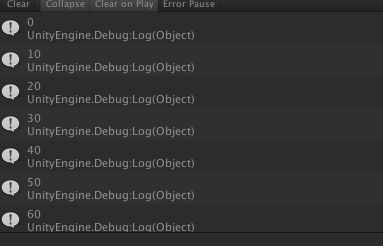自己动手,实现一种类似List的数据结构(二)
前言:
首先,小匹夫要祝各位看官圣诞快乐,新年愉快~。上一篇文章《自己动手,实现一种类似List<T>的数据结构(一)》 介绍了一下不依靠List<T>实现的各种接口,仿造一个轻量级数据结构的过程。可能有的看官会有一些疑问,例如一些功能可以通过Linq提供的拓展来实现呀。此言不虚但也不全对,为了我们在工作中能方便的操作集合而提供的这些拓展方法(包括我们自己也可以构建的拓展方法),例如 Where,Any,Max,All...balalbala等等这些方法都是针对IEnumerable的对象进行扩展的,也就是说需要实现 IEnumerable接口。但是前面已经说了,小匹夫的用意是不实现各种List<T>继承的接口。另外小匹夫的初衷是仿造和拓展 List<T>,将工作中需要使用到的各种功能集成到一个类中,所以有些现成的拓展方法不需要,有一些没有的方法小匹夫也会自己实现一下(当然不是通过给现成的类添加拓展方法这种方式)。当然这篇文章介绍的东西还不成熟,需要慢慢完善,小匹夫也是把这个当做一个学习和实践的机会。好啦,解释完毕,那就介绍下今天的内容吧:
- 实现的方法的名称和说明列表
- 增加了3个委托来抽象3种情况。
- Map:通过委托把EggArray<T>中的每个值映射到一个新的EggArray<T>中。
- Difference:返回的值来自EggArray<T>中,但同时不是传入的Other里面的值
- Invoke:在EggArray<T>的每个元素上执行methodName方法。
- Pluck:萃取EggArray<T>中某字段值,返回一个数组,由于字段类型不确定,所以需要装箱。
- Shuffle:返回一个随机乱序的T[]副本。
那么下面我们就书接上文,继续我们仿照和拓展List<T>的步伐。
Underscore.js的前缘
咦,这不是一篇关于Csharp的文章吗?怎么把JS给干出来?哈哈,当然技术上并没有什么必然的关系,只不过是小匹夫之前使用过cocos2d这套游戏引擎开发过游戏,有一段时间也很痴迷于cocos2d-js这种使用JS就能开发原生游戏的能力。所以也接触了一些js库,对Underscore.js更是情有独钟。所以一提到要模仿List<T>这种内部其实是Array的数据结构,一个灵感就是为何不尝试实现一些Underscore.js数组部分的若干功能呢?所以下表EggArray<T>的新增方法中有部分借鉴于Underscore.js。
新增方法表
| 新增方法 | 说明 |
| First | 返回EggArray<T> 的第一个元素。传递 n参数将返回数组中从第一个元素开始的n个元素 |
| Last | 返回EggArray<T> 的最后一个元素。传递 n参数将返回数组中从最后一个元素开始的n个元素 |
| Slice | 切割 |
| Get | 预留 |
| Set | 预留 |
| AddFirst | 将对象添加到 EggArray<T> 的起始处。 |
| RemoveLast | 从 EggArray<T> 中移除特定对象的最后一个匹配项。 |
| ContainsStrict | 确定某元素是否在 EggArray<T> 中。(严格判断是否是同一个对象) |
| IndexOfStrict | 搜索指定的对象,并返回整个 EggArray<T> 中第一个匹配项的从零开始的索引。(同上) |
| TryGet | 获取指定类型对象 |
| LastIndexOf | 搜索指定的对象,并返回整个 EggArray<T> 中第一个匹配项的从结尾开始的索引。 |
| Map | 通过委托把EggArray<T>中的每个值映射到一个新的EggArray<T>中 |
| Filter | 遍历EggArray<T>中的每个值,返回包含所有通过predicate真值检测的元素值。 |
| Without | 返回一个删除所有values值后的 EggArray<T>副本。 |
| Find | 在EggArray<T>中逐项查找,返回第一个通过predicate迭代函数真值检测的元素值 |
| Every | 如果EggArray<T>中的所有元素都通过predicate的真值检测就返回true。 |
| Some | 如果EggArray<T>中有任何一个元素通过 predicate 的真值检测就返回true。 |
| Partition | 拆分一个EggArray<T>为两个数组: 第一个数组其元素都满足predicate迭代函数, 而第二个的所有元素均不能满足predicate迭代函数 |
| Difference | 返回的值来自EggArray<T>中,但同时不是传入的Other里面的值 |
| Uniq | 返回 EggArray<T>去重后的副本 |
| Invoke | 在EggArray<T>的每个元素上执行methodName方法。 |
| Pluck | 萃取EggArray<T>中元素某属性值,返回一个数组。 |
| Shuffle | 返回一个随机乱序的T[]副本 |
Sample |
从 EggArray<T>中产生一个随机样本。传递一个数字表示从EggArray<T>中返回n个随机元素。否则将返回一个单一的随机项。 |
各位看官可以看到,增加了许多挺有趣的功能。为了能将表中的功能名字变成真正的功能,我们还需要对上一篇文章中的变量&属性部分做一些增改,如下我们增加了3个委托来抽象3种情况。
//定义三个委托来处理具体逻辑 public delegate void IterationHandler(T item); public delegate bool IterationBoolHandler(T item); public delegate T IterationVauleHandler(T item);
同时为了能测试我们的功能,我们还要定义一个用来被当做元素测试的类。
//被测试类 public class TargetClass { public int id; public string name; public TargetClass(int id) { this.id = id; this.name = "NO. " + id; } public void Hi() { Debug.Log ("say hi"); } }
同时还要有一个测试的环境,因为小匹夫是用mac做unity3d的开发,所以就直接使用unity3d的环境了。
/// <summary> /// Egg array test.Based on Unity3D,各个元素的id为0-9 /// </summary> using UnityEngine; using System.Collections; using EggToolkit; public class EggArrayTest : MonoBehaviour { EggArray<TargetClass> testArray = new EggArray<TargetClass>(); // Use this for initialization void Start () { for(int i = 0; i < 10; i++) { TargetClass test = new TargetClass(i); testArray.Add(test); } // Test_Difference(); // Test_Invoke(); // Test_Pluck(); // Test_Shuffle(); // Test_Map(); } void Update () { } }
下面就让小匹夫带领大家分析几个具体的函数,并进行下测试吧。
Map:
使用了IterationVauleHandler这个委托,即需要返回一个T类型的值。
//通过委托把EggArray<T>中的每个值映射到一个新的EggArray<T>中 public EggArray<T> Map(EggArray<T>.IterationVauleHandler handler) { EggArray<T> targetArray = new EggArray<T>(this.capacity); for(int i = 0; i < this.count; i++) { T t = handler(this.items[i]); targetArray.Add(t); } return targetArray; }
在EggArrayTest中实现Test_Map这个方法:
void Test_Map() { EggArray<TargetClass> newArray = testArray.Map(delegate(TargetClass item) { TargetClass newItem = new TargetClass(1); newItem.id = item.id * 10; return newItem; }); newArray.Foreach(delegate(TargetClass item) { Debug.Log (item.id); }); }
//原元素的id为0-9,输出为0,10,20...90
Difference:
调用了Filter方法,其中Filter方法的参数是一个IterationBoolHandler委托,即一个返回bool值的委托。具体可以看Filter的实现。
/// <summary> /// Difference the specified others. ///输出不包含others中元素的EggArray<T> /// </summary> /// <param name="others">Others.</param> public EggArray<T> Difference(EggArray<T> others) { EggArray<T> targetArray = new EggArray<T>(); targetArray = this.Filter(delegate(T item) { bool b = !others.Contains(item); return b; }); return targetArray; }
在EggArrayTest中实现Test_Difference这个方法:
//作为参数传入的EggArray<T>由testArray的第5,第9这2个元素组成 void Test_Difference() { EggArray<TargetClass> differentArray = new EggArray<TargetClass>(); differentArray.Add(testArray.Get(5)); differentArray.Add(testArray.Get(9)); testArray.Difference(differentArray).Foreach(delegate(TargetClass item) { Debug.Log(item.name); }); } //输出缺少no. 5,no. 9这两个name

Invoke:
在EggArray<T>的每个元素上执行methodName方法。
/// <summary> /// Invoke the specified methodName. /// 每个元素上执行methodName方法,若方法不存在则抛出exception /// </summary> /// <param name="methodName">Method name.</param> public void Invoke(string methodName) { Type t = typeof(T); var method = t.GetMethod(methodName); if(method == null) throw new Exception("没有找到指定的方法哦~,可能不叫" + methodName); for(int i = 0; i < this.count; i++) { method.Invoke(this.items[i], null); } }
在EggArrayTest中实现Test_Invoke这个方法:
//调用TargetClass的HI()方法 void Test_Invoke() { testArray.Invoke("Hi"); } //输出:say hi

Pluck:
萃取EggArray<T>中某字段值,返回一个数组,由于字段类型不确定,所以需要装箱。当传入的名称无法查找到该字段时,抛出exception。
/// <summary> /// Pluck the specified fieldName. /// 萃取某字段值,返回一个数组 /// 由于字段类型不确定,所以需要装箱 /// </summary> /// <param name="fieldName">Field name.</param> public object[] Pluck(string fieldName) { Type t = typeof(T); object[] targetArray = new object[this.count]; var field = t.GetField(fieldName); if(field == null) throw new Exception("没有找到指定的field哦~,可能不叫" + fieldName); for(int i = 0; i < this.count; i++) { object value = field.GetValue(this.items[i]); targetArray[i] = value; } return targetArray; }
在EggArrayTest中实现Test_Pluck这个方法:
//获取各个元素 字段id的值 void Test_Pluck() { object[] testObj = testArray.Pluck("id"); string testString = string.Empty; for(int i = 0; i < testObj.Length; i++) { testString = testObj[i].ToString(); Debug.Log ("field value is " + testString); } } //输出为0-9

Shuffle:
返回一个随机乱序的T[],下面看代码
/// <summary> /// Shuffle this instance. /// 返回一个随机乱序的副本 /// </summary> public T[] Shuffle() { T[] shuffled = new T[this.count]; Random random = new Random(); for (int index = 0, rand; index < this.count; index++) { rand = random.Next(index); if (rand != index) shuffled[index] = shuffled[rand]; shuffled[rand] = this.items[index]; } return shuffled; }
在EggArrayTest中实现Test_Shuffle这个方法:
// void Test_Shuffle() { TargetClass[] test = testArray.Shuffle(); for(int i = 0; i < test.Length; i++) { Debug.Log (test[i].name); } } //默认顺序为NO. 0 ~ NO. 9 //乱序后,见图

好了,这周就到这里~小匹夫最近也在赶项目的途中,所以测试和修改的精力也被消耗了很多。过完元旦之后,再继续~
末了还是要说一声:各位元旦快乐~
完整的代码和测试可以在这里获取:https://github.com/chenjd/Unity3D_EggArray
